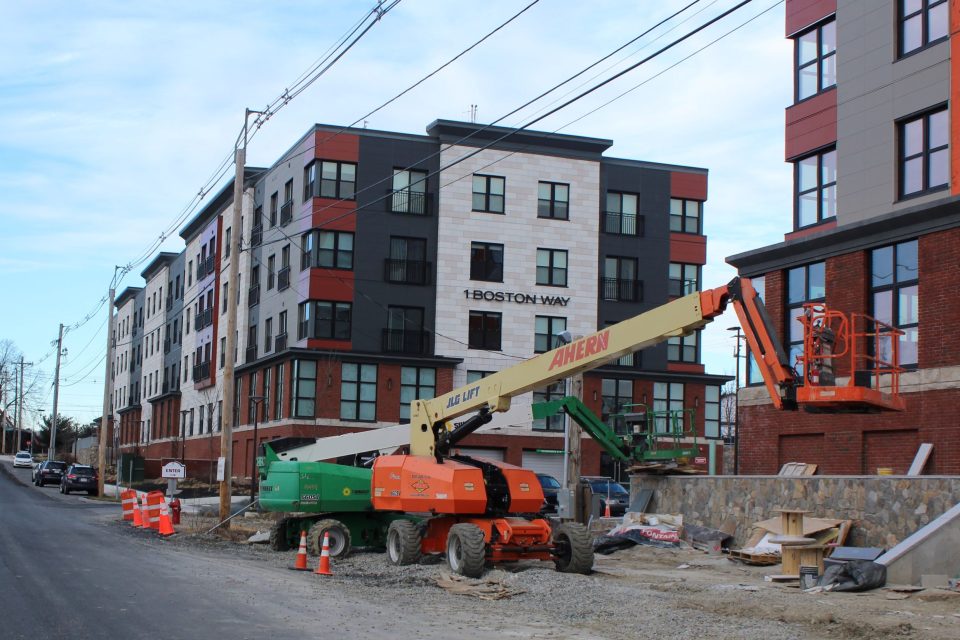REGIONAL – Towns and cities in eastern Massachusetts last week took the first step toward creating thousands of new multi-family homes to reduce the chronic housing shortage.
A new economic development law includes a provision that requires communities served by the MBTA to have at least one zoning district of “reasonable size” in which multi-family housing is permitted “by right.” That means the municipality cannot require builders to apply for a special permit or variance from city or town boards.
Most communities are required to rezone at least 50 acres with minimum density of 15 housing units per acre. In communities served by rail and bus, 40 percent of the land must be within a half mile of an MBTA station.
A total of 175 communities are governed by the law. A few are being required to allow for more housing units. Others are required to allow fewer.
While cities and towns are being required to rewrite their zoning laws, many of which will have to be approved at town meetings this year and next, the law does not guarantee that builders will design and construct the needed multi-family units.
Some housing groups have complained that the law does not require a percentage of the new units to be designated as “affordable.” Proponents of the new law say local communities can impose an affordable requirement on builders.
State Sen. Bruce Tarr, who represents much of the North Shore, said the new law may not be the perfect solution, but the MBTA did not create the problem.
Last week, planning boards and directors began submitting to the Department of Housing and Community Development a profile of their municipality, identifying plans to implement the law and identifying obstacles faced in complying.
If local governments do not comply, they will be ineligible for grants from three state programs that fund housing, capital projects and infrastructure.
Cities and towns have pushed back against the law, saying some communities will find it impossible for some to comply with the law. They complain that the new rules force a one-size-fits-all approach on communities, rather than having the state work with towns to see where development is best suited.
In Salisbury, Lisa Pearson, the planning director, wrote in an email, “Since we need to find 50 developable acres with a density of 15 units an acre, that is a tall ask for Salisbury. It will take some time and really looking on what exists and what makes sense.”
Pearson, who has asked the Merrimack Valley Planning Commission for technical assistance, wrote that she is looking near the town business center where Pettengill House, CVS and the banks are located. There residents will have access to a bus line.
In addition, a new bus line on Rte. 110 has been added. “That opens up some new areas as possibilities since now you can get to Stop and Shop and the Amesbury bus station much faster without going through Newburyport,” she wrote.
The city of Newburyport had already created a zoning district around the MBTA station and the Rte. 1 Rotary that allows for multi-family housing. Several developers, led by Minco Corp., have already built multi-family housing that is within walking distance of the station.
Most communities like Rowley and Georgetown rely on septic tanks, not municipal sewers, which are needed for such dense housing. Another state law governs septic volumes.
The town of Rowley, which is mandated to allow 601 new units, will nominate two areas totaling 132.35 acres to comply with a state mandate. That will be an increase in the town’s number of housing units by 25 percent.
Town planner Kirk Baker described the proposed number of housing units as “aspirational.”
The town of Ipswich, which is being required to authorize 971 new housing units, might “create an overlay district on the existing In-town Residential, General Business and Central Business zoning districts, all of which allow multi-family housing, and most of which are located within the station area,” the filing said.
The town of Georgetown, which has municipal water, but not sewer, does not have a lot of vacant land. Town planner John Cashell said the town will likely have to create an overlay district that is close to commercial businesses.
If the town does not have the infrastructure to support multi-family housing, the town will have to build it. “Where are we supposed to get the money for it?” Cashell asked.
More Housing Coming
Tuesday February 07, 2023

New Apartment Buildings near the Newburyport MBTA Station



